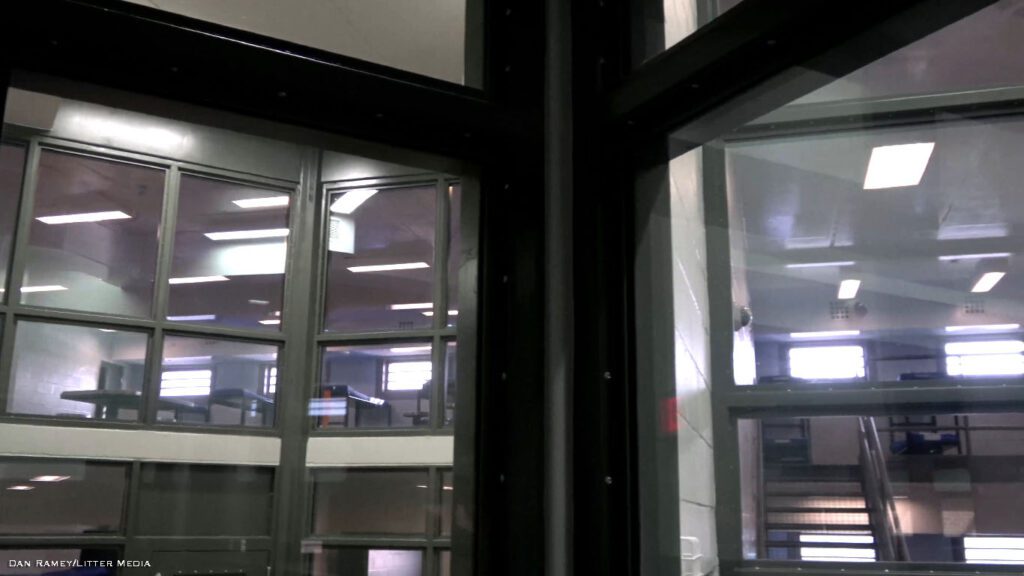Presented By Atomic Speedway
Fayette County is on the verge of opening a new jail and sheriff administrative offices as the finishing touches are being put on a new $24 million construction project on Robinson Road on the outskirts of Washington Court House.
Fayette County Sheriff Vernon Stanforth said; “I always contend we have had a secure building, but there are issues we cannot address in an 1884 building.” Over the years, the current jail had failed dozens of state standards and was in danger of being shut down by the state. That is among the reasons Sheriff Stanforth is happy to see the new building almost ready to open for inmates.
“By the square footage that’s dictated by the State of Ohio, we can only have 24 in the (current) jail. Our population is typically 50. We’ve had as many as 93 in that facility and we’re talking about packed. They (inmates) take turns sleeping, (but) we’ve tried to stay away from that.”
“In the new facility, we are going to have 120 beds. We are hoping with the help of the courts, that will not be maxed out.”
Sheriff Stanforth was scheduled to lead a tour of the new facility for the judges of Fayette County Wednesday, immediately after Litter Media’s cameras were allowed into the new site for a tour led by Sheriff Stanforth.
The voters of Fayette County got the ball rolling on the project when they approved one of the first dual ballot issues for a new law complex. Stanforth says voters approved jail construction and its operation- all with one levy.
The county was also able to get a U.S. Department of Agriculture loan for $20 million, with Fayette County putting in another $2 million to $3 million from their general fund for a project that will max-out at approximately $24 million.
Stanforth says the levy was designed to pay back the loan over 40 years. But, the Fayette County Commissioners recently renegotiated the federal loan, which will save on the interest percentage of the loan and shave off approximately 10 years on the payback of that loan.
The sheriff says he’s hopeful the commissioners will be able to negotiate further with the USDA, which could lead to even more savings for Fayette County in the payback of the loan.
On the lifespan of the new corrections center, Stanforth says there is really no way to be able to gauge that. “No one will ever guarantee the life of a building over 25 to 30 years- that’s industry standard for any building. The current building (jail) has outlived its life-cycle by about 100 years. This building, we hope, will last longer than 30 years.”
Changes in philosophical methods for corrections could also have a bearing on the future lifespan of the new jail, according to Sheriff Stanforth.
“It doesn’t take too much imagination to look at the technology in the last 20, even 10 years and the same thing will happen to this facility. Technology will move on, our corrections standards based on community standards will migrate and change as well over the next 20 years so they may have less people incarcerated.”
Stanforth continued; “The mood may change and we may want more people incarcerated. And this design is fixed so that another generation could come in and build a replicate building right beside it, using the same blueprints that could house over 200 inmates. And still use the same common utility hallway we showed you earlier that would have the same laundry, kitchen and loading area that would be used for both facilities- if that would ever come about it”.
Inmates could be moved to the new Fayette County Jail within the next month, once all security checks have been completed.





More Stories
Waverly Students Win FBP Diversity Council Art Contest
Longtime SPVMHC Board Member Honored As Rulon Center Celebrates 5th Anniversary
Local Man Appointed Ohio Volunteer Service Coordinator